Ducati's new generation v-twin 1200cc sports bike will be announced at the EICMA International Motorcycle Show in Milan this November. What we know for sure is that it will be named the "Ducati 1199 Panigale" and that it will not use the traditional Ducati trellis frame but a roadgoing version of the frameless design which has been raced and evaluated rather unsuccessfully by the world's best rider - Valentino Rossi. It seems like a massive gamble for a company that has traditionally attracted customers with its race-winning superbikes. Rumours suggest that the new road bike will weigh in at 176 kg wet and produce 195 bhp. How well it will handle will be the issue.
Indeed, the 2011 MotoGP season has seen several things brought into question by Ducati's MotoGP program. The first is whether Casey Stoner was riding "above and beyond" in winning 23 times in four seasons on the Ducati - despite ill health and injury, his four years with the team yielded 23 wins, 21 pole positions and 20 fastest laps.

The most successful rider on the Desmosedici other than Stoner was Loris Capirossi who podiumed (meaning he was one of the first three finishers) 23 times including seven wins from 82 starts.
Other top riders employed by Ducati to ride the Desmosedici have had woeful results. Sete Gibernau was a contender for the MotoGP title in 2003 and 2004 but once on the Desmosedici, didn't get the bike on the podium once, and it almost wrecked the career of Italian Marco Melandri who didn't get near the podium during a season of trying. Melandri won five times at MotoGP level on a Honda, went backwards on the Ducati in 2008, then took the only ride on offer on a satellite Kawasaki in 2009, managing to get the uncompetitive Kwaka on the podium in a wet French Grand Prix. His results on the unsupported Kawasaki were significantly better than on the factory Desmosedici.
Superbike champion Troy Bayliss rode the bike in 33 races for four third places and a win. World Champ Nicky Hayden has had 49 starts on the bike for three thirds and no wins.
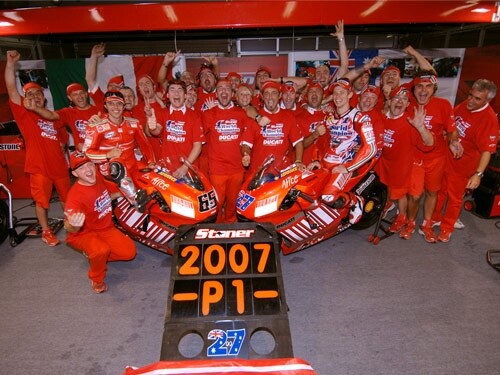
Since the bike was given a carbon fibre chassis at the beginning of 2009, only Stoner appears to have been able to ride it - from 94 starts by the factory bike (Hayden 49, Rossi 14, Stoner 31 - all world champions at the highest level), Hayden has scored just three podiums (all third place), Valentino Rossi has just one third place to his credit, while Stoner scored 17 podiums including seven wins.
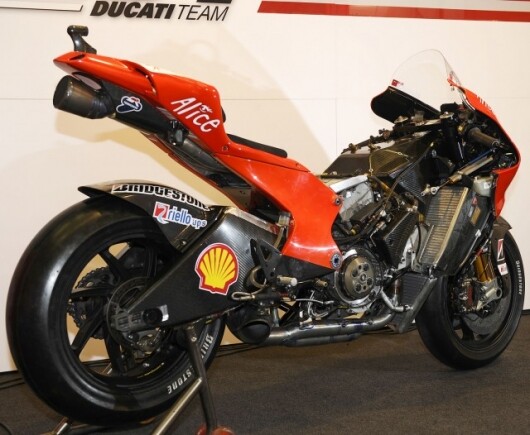
Every one of the riders has criticized the bike for its lack of feedback from the front end. To highlight this lack of competitiveness by the Ducati, Stoner has swapped back onto a conventional bike in 2011 and been even better - eight wins, one second and four third places so far this year. Oh, plus one DNF where Valentino Rossi on the Ducati uncharacteristically lost control and t-boned him, putting him out of the race. On the Ducati, Stoner got on the podium just over 50% of the time - on the conventional Honda, it would be 100%, if not for the Ducati's lack of feel under brakes which caused the crash.

The biggest problem is that by placing the rider everyone perceived as the best in the world on the bike, Ducati has clearly highlighted that only Stoner appears capable of dealing with the Desmosedici's unpredictable nature - all those times Stoner crashed for no apparent reason now take on a whole new perspective, and Stoner is arguably the best rider in the world at the moment in light of the new season results.

The ability of Rossi and his crew-chief Jeremy Burgess to develop a bike to winning speed was thought to be a given at the end of last season but the complete lack of success leaves little doubt that the problem is with the frame design, and even more likely, with the suitability of a composite monocoque chassis for competition purposes. Stoner remains the only person to have won a MotoGP race using a carbon fibre chassis of any description and we discussed the problems Ducati would face at the beginning of 2009.
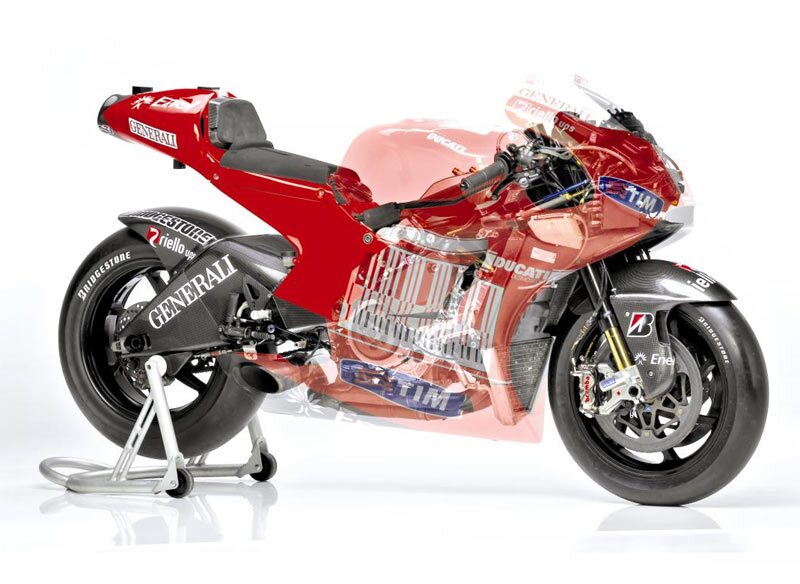
That Ducati discounted Stoner's input is now painfully obvious. He found it almost impossible to get upgrades and changes to the bike during the seasons in which he rode it and to his immense credit, he didn't whinge about it.
Valentino Rossi's input is getting a lot more cred though, and he tested the fifth brand new chassis of the season at private tests held at Aragon last week. Italian sources claim that the frame was a traditional aluminum frame similar to those used by every other MotoGP machine of the last few decades.
Even if the frame produces good results (difficult to establish because track conditions vary from day to day), Ducati cannot use it in 2011 because the engine is designed for the carbon fibre frame and every time Ducati uses a new motor from this point forward, it will need to start the race from pit lane, just as Rossi did in Aragon on September 18.
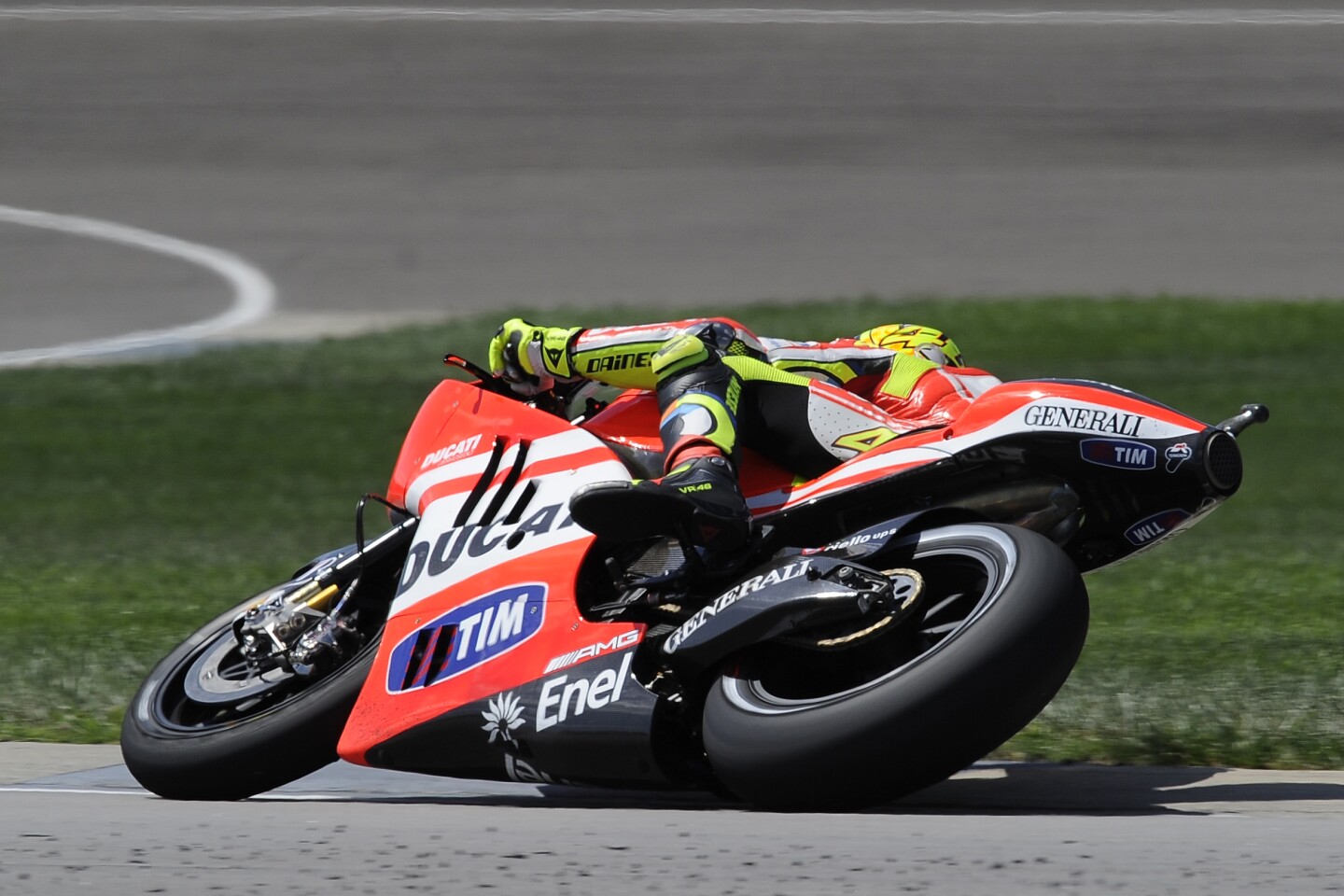
That Ducati will suffer due to the Ducati MotoGP programme's failure to produce results is fairly obvious but not necessarily hugely so. Suzuki and Kawasaki aren't unduly penalised in the sale of their road bikes due to lacklustre MotoGP performances, as prototype racing is only vaguely relevant.
Superbike racing is different though. Superbikes are very closely related to the bikes on the showroom floor and Ducati's rise as a sports bike manufacturer is directly linked to its performances in Superbike racing. Its 303 Superbike wins have contributed directly to the success of its road bikes. Indeed, its dominance of superbike racing (all the other manufacturers together only have 283 wins to their credit) has largely been the basis for its success as a manufacturer.

What I find astounding is that the very feature that appears to be the focus of the marque's MotoGP problems (the engine is unquestionably competitive - it's the frame that is the problem) has been incorporated into the next major upgrade for its top-of-the-range roadbike, and hence its superbikes for the future.
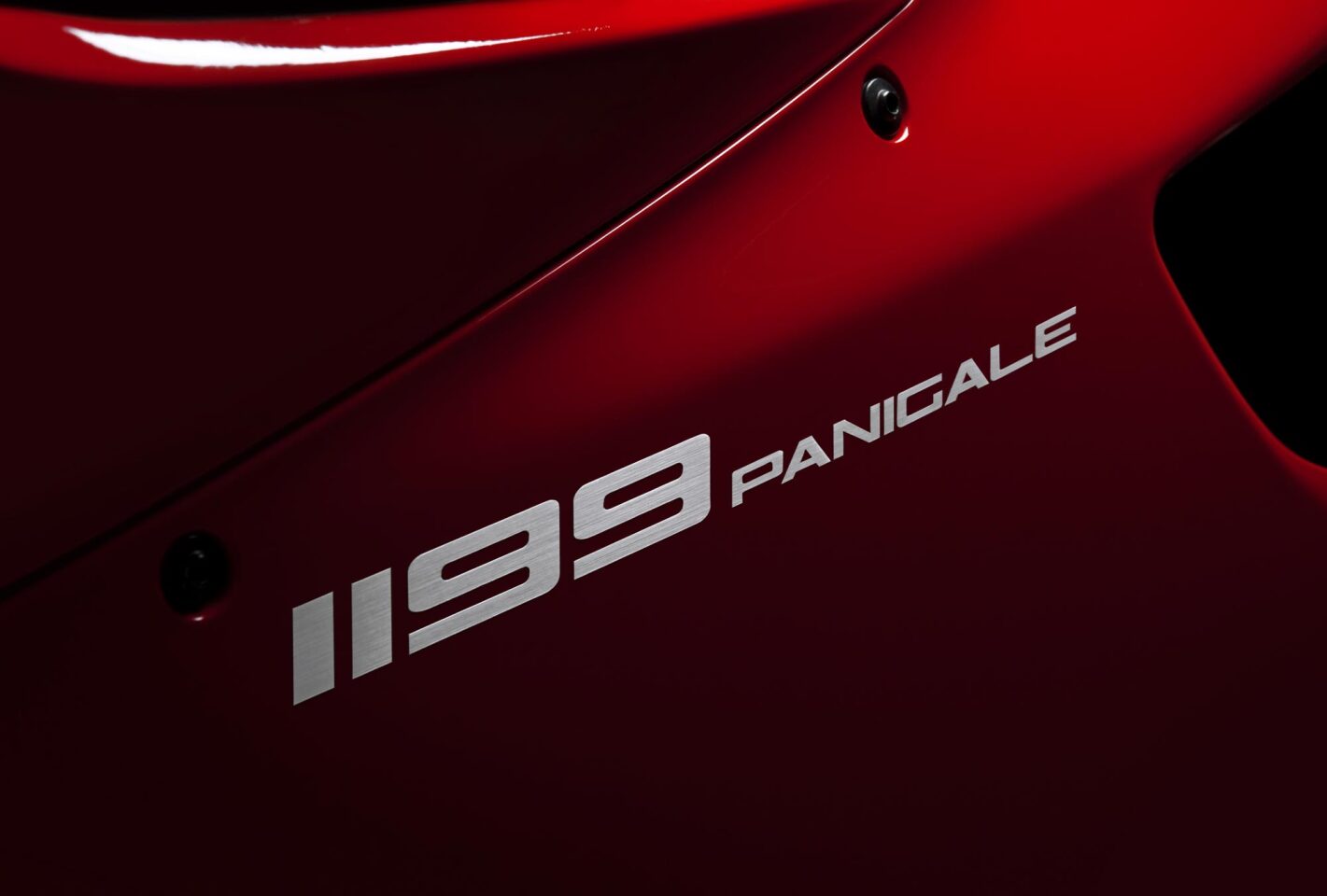
As you might have gathered, the Panigale (pronounced "Pan-ee-gah-lee") and named after the Borgo Panigale area of Ducati's home town Bologna, is to feature the same frame design as these Ducati patent drawings show - the same frame design that they can't get to work oin a race bike at the highest level, with the best rider in the world.
Ducati's commitment to the production of the Panigale was obviously made quite some time ago, as can be seen from the patent documents we published more than 18 months ago.

As the time of unveiling has drawn closer, lots of information has been leaking as to the specifications of the bike, and it appears Ducati is purposefully building the suspense with these leaks.
The "rumours" suggest the new 1200cc V-twin superbike replacement for the 1198 range has a radically oversquare (112mm bore) V-twin engine with 195bhp, and the new engine will have lost the toothed belt cam drive in favour of gear-drive, just as the Desmosedici's cams are driven.
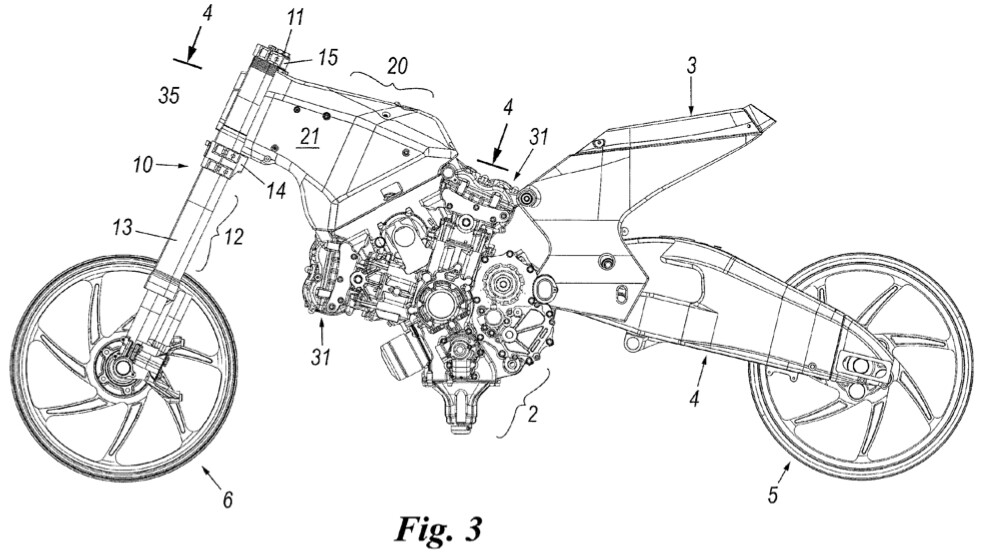
The new engine is hence 15 bhp stronger than the existing 1198R and credible rumours also have it coming in at a weight of just 176 kg wet (i.e. ready to roll, with a thimble full of gas). If the numbers are correct, this would give it a better power to weight ratio than any existing 1000cc sports bike and make it 19 kg lighter than the current lightest of that group - the Kawasaki ZX10R.
The Panigale will reportedly have LED lighting, two underbelly exhausts to reduce and centralize weight and a horizontal shock absorber as part of the rear suspension and swingarm construct which bolts to the rear of the motor.
There's no doubt the 1199 will see the trellis frame gone and frame-less construction for the first time - no-one is quite sure whether the box structure between the steering head and the motor will be of carbon composite or aluminum at this stage, but it should be pointed out that Ducati has tried both at MotoGP level this year and neither of them has worked.
The Ducati 1199 Panigale will not make its world superbike debut until 2013, though it will be raced in the 2012 FIM Superstock Championship, a series it currently leads in 2011. A 2012 version of the existing 1198 will be offered to superbike teams, and after Carlos Checa's likely win this year, it'll be interesting to see how many superbike teams are queued up for 2013 when the no-frame model is ready.
The overwhelming evidence is that the new Panigale is a ripsnorter of a machine. The numbers alone suggest it will be extremely fast. Even Troy Bayliss, who has been a major part of the development oif the machine tweeted earlier this week, "Been a while but anyone worried about the new Ducati Superbike need not, matched my best time ever in the arvo when track is bit slower."
Ducati must be very confident of the Panigale to be forging ahead with its introduction in light of the issues being experienced by the best rider in the world, and arguably the best racebike engineer in the world (Jeremy Burgess). If the Panigale fails on the racetrack, it will put a massive hole in Ducati's roadbike sales.
Indeed, anything less than winning could be corporate suicide ... and if the 200 bhp superbike is as good as they say it is, why can't the same frame be made to work even passably on a 250 bhp MotoGP bike.
It's a huge risk to take with the reputation of a successful company.
Oh, and that's Ducati's Panigale teaser video below.




































